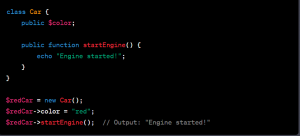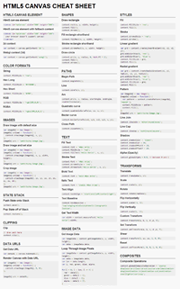Mastering Object-Oriented Programming (OOP) in PHP: Unveiling the Power of Code Reusability and Organization
Description
In the world of web development, where complexity and functionality continue to evolve, Object-Oriented Programming (OOP) stands as a cornerstone for creating organized, efficient, and maintainable code. With PHP being one of the most widely used server-side scripting languages, understanding and harnessing the power of OOP in PHP is essential for modern developers. In this article, we'll delve into the fundamentals of OOP in PHP, exploring its concepts, benefits, and how it elevates the art of coding.
Understanding the Essence of Object-Oriented Programming
At its core, OOP is a programming paradigm that structures code around the concept of objects, each encapsulating data and behaviors. This paradigm emphasizes the organization of code into reusable and modular components, making it easier to manage, extend, and maintain applications as they grow in complexity.The Pillars of OOP: Encapsulation, Inheritance, and Polymorphism
OOP in PHP is built upon three key principles: encapsulation, inheritance, and polymorphism.
Encapsulation: Encapsulation refers to the practice of bundling data and methods that operate on the data into a single unit, an object. This prevents direct access to internal data from outside the object, promoting data integrity and reducing unintended side effects.
Inheritance: Inheritance enables the creation of a new class (subclass) based on an existing class (superclass). The subclass inherits properties and methods from the superclass, fostering code reuse. This hierarchical structure allows developers to create specialized classes while maintaining a common foundation.
Polymorphism: Polymorphism allows objects of different classes to be treated as instances of a common superclass. This promotes flexibility and extensibility, as different objects can respond to the same method call in unique ways.
Classes and Objects: Building Blocks of OOP
In PHP, classes serve as blueprints for objects, defining their properties (attributes) and behaviors (methods). Objects, on the other hand, are instances of classes. Let's consider a real-world analogy: a class could be "Car," defining attributes like "color" and methods like "startEngine," while an object of the "Car" class could be a red car that's ready to hit the road. If you're ready to harness the power of OOP in PHP and elevate your development projects, explore the opportunity to hire PHP developers who excel in Object-Oriented Programming through Lemon.io by visiting https://lemon.io/hire-php-developers/.Creating and Using Classes and Objects in PHP
Creating a class in PHP involves using the class keyword, followed by the class name, and curly braces to define its contents. To instantiate an object, the new keyword is used, invoking the class constructor if defined.
Benefiting from Code Reusability and Maintenance
One of the primary advantages of OOP in PHP is code reusability. With inheritance, common functionalities can be encapsulated in a base class, and specialized classes can inherit and extend its behavior. This reduces redundant code and promotes the DRY (Don't Repeat Yourself) principle, resulting in cleaner and more efficient codebases.Furthermore, OOP enhances code maintenance. As applications evolve, modifications can be made within specific classes, minimizing the risk of unintended consequences across the entire codebase. This modularity simplifies debugging and updates, making maintenance a more manageable task.
Design Patterns and OOP in PHP
Design patterns are reusable solutions to common programming problems, and OOP in PHP provides a natural environment for their implementation. Patterns like Singleton (ensuring a class has only one instance) and Factory (creating objects without specifying the exact class) are particularly useful in PHP applications, enhancing flexibility and scalability.Challenges and Best Practices
While OOP brings numerous benefits, mastering it in PHP requires careful consideration of best practices. Overuse of inheritance can lead to complex hierarchies, and improper encapsulation can expose internal data. It's crucial to strike a balance between flexibility and complexity, opting for composition over inheritance when appropriate.Additionally, PHP offers visibility modifiers (public, private, protected) to control access to class members. Adhering to these modifiers ensures that encapsulation is maintained, preventing unintended manipulation of object data.
Embracing OOP: The Future of PHP Development
As the demands of modern web development continue to evolve, Object-Oriented Programming remains an essential tool for developers. By leveraging the principles of encapsulation, inheritance, and polymorphism, developers can create code that is not only more organized and maintainable but also scalable and adaptable to future challenges.In the PHP ecosystem, OOP has evolved from being a mere option to becoming a fundamental skill. By embracing OOP in PHP, developers unlock the ability to craft applications that are not only functional but also elegant, reflecting the principles of modularity, reusability, and extensibility. Whether you're building a simple website or a complex web application, understanding and harnessing OOP in PHP paves the way for a more efficient, collaborative, and future-proof coding journey.
 Blog
Design
Development
Mobile
Inspiration
CSS
Javascript
News
Opinions
Politics
Menu
Blog
Design
Development
Mobile
Inspiration
CSS
Javascript
News
Opinions
Politics
Menu
